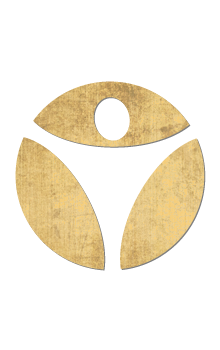How to Get Started With Yoga for Men Over 50
- Updated on: July 8, 2022

Did you know that yoga can be incredibly helpful for aging? Are you aware that yoga is great for all ages, and that you can find a practice no matter what you prior experience is. Did you know there are specific practices and ways to practice yoga for men over 50?
As we age, our bodies go through many changes. We might see a rise in blood pressure, curving of the posture, loss of flexibility, and so much more. This is why having a proper practice to combat aging can be so important.
Did you know that yoga has many benefits as we age?
Yoga can help to keep us mobile, more flexible, and even more focused.
Posture and Core Strength- Yoga can increase strength in the core back muscles, decreasing back pain and correcting posture. Since many people suffer from poor posture and kyphosis as they age, yoga can be a great way to reverse the curvature of the spine, improving posture in the long run.
Flexibility and Mobility- As we age, if we are not continuing to stay mobile and keep our bodies moving, we can easily begin to lose our flexibility, making us more prone to injuries from inflexible muscles and other soft tissues. When practicing yoga, flexibility is promoted and increased over time. Being flexible is not necessary to do yoga, but continuing your yoga practice can help to improve your flexibility. This, in turn, helps with mobility and staying active.
Easing Chronic Pain- As the years go by, you might find that you experience more pain. Chronic pain is seen often as we get older, and it can be due to arthritis, tendonitis and tendinopathy, loss of muscle fibers, a decrease in flexibility, tightening of the fascia, etc. When doing yoga, the body is able to be stretched out and tight areas can be released. In addition, yoga helps to drain toxins from the body, and some poses even help to drain the lymph nodes, leading to less inflammation. These are just some of the many ways that yoga can help with chronic pain.
Cardiorespiratory Health- Aging can also affect the heart and lungs. Breathing problems and increases in blood pressure and heart rate are just some of the many conditions that can show up. A person’s cardiorespiratory health can be affected by a variety of lifestyle choices over the years as well as genetics. One study showed that the decline of cardiorespiratory fitness accelerates after we reach the age of forty-five. (Jackson, et al.) The deep breathing exercises in yoga can help to strengthen the muscles of the lungs and diaphragm. Practices of meditation, relaxing poses, and mindfulness in yoga can all have benefits for the cardiorespiratory system by decreasing stress and lowering blood pressure and heart rate.
Balance- As we get older, our balance often decreases. This is especially prevalent in those who are not continuing to work on increasing their balance as the years go on. Yoga involves many balancing poses. Even if you can not fully do a pose, there are always modifications that you can do to practice with a bit of support, building your balance up over time. Studies have shown that this can also increase confidence while decreasing the stress of worrying about falling. (Galantino, et al.)
As you can see, yoga has many benefits for us as we age. The benefits listed above are only some of the many ways that yoga can help you as the years go by. Keep on reading to better understand how yoga can help those over the age of fifty.
In the article, we’ll cover:
- Benefits of Yoga for Men Over 50
- Uniques Challenges of Yoga for Men Over 50
- How Often Should Men Over 50 Practice Yoga?
- How to Get Started with Yoga When You’re Over 50
- How to Incorporate Yoga into Your Exercise Routine When You are Over 50
- Best Yoga Poses for Men Over 50
- Hardest Poses for Men Over 50 and How to Modify Them
- Best Body By Yoga Programs for Men Over 50

Benefits of Yoga for Men Over 50
Now that we have seen the general benefits that yoga can offer as we age, let’s take a look at why yoga is beneficial for men over 50.
Testosterone- As men get older, their testosterone levels decrease each year. Did you know that yoga can actually help to increase testosterone? By increasing core strength and staying fit, you can actually increase testosterone. Yoga also helps to decrease stress and anxiety which, in turn, helps to increase testosterone levels. (Sengupta, et al.)
Reproductive Organ Health- Did you know that yoga can actually help the male reproductive organs? In addition to increasing testosterone levels, yoga promotes better blood flow to the groin and can even decrease swelling of the prostate. Stress reduction in yoga also offers benefits for the reproductive organs by keeping the body healthy and producing the proper amount of hormones. (Sengupta, et al.)
Flexibility/ Mobility- Men are generally less flexible than women. While this is not the case for everybody, in general, men are naturally not as flexible. This is due to a variety of reasons. Women have more mobility in the joints and ligaments so that their body can easily shift when giving birth. In addition, men are more likely to have more muscle mass in general. When building muscles without stretching, it can be easy to lose more flexibility. Hormones, genetics, and prior experience can also all play a role in levels of flexibility. (Gołaś, et al.) As we age, we lose flexibility, and this is especially the case for men. Therefore, it is important to spend time warming up and maybe holding the poses for even longer to increase your mobility.
Unique Challenges of Yoga for Men
While every person is different, there are unique challenges in general the males face when it comes to practicing yoga. Let’s take a look at what some of these challenges are and why men deal with them. Keep in mind that these are generalizations and they are not always the case for everyone.
Flexibility- As we now know, males are naturally less flexible than females for a variety of reasons. (Gołaś, et al.) Women naturally have more mobility in the ligaments and tendons, making stretching more accessible. However, for men, the lack of flexibility can sometimes make poses more difficult. This is why it is important to keep practicing yoga and increasing your flexibility over time. A lack of flexibility does not mean you should not be practicing. The only way to increase your flexibility is to keep working on it.
Muscle Mass- Men, in general, tend to have a higher muscle mass than women, especially in the upper body. Men are also more likely to do more strength training exercises and routines. The problem is, when you have large muscles but are not also stretching them out, this can actually decrease your flexibility over time, making poses harder to do. While more muscle mass can be great, the more you strengthen your body, the more you should be stretching to counteract the tightening of muscles and other soft and connective tissues. This ensures that your body is able to be both strong and flexible.
Joint Mobility- For the same reasons that women often have more flexible muscles, tendons, and ligaments, they also tend to have more mobility in their joints. This makes it possible for the joints to shift if a female becomes pregnant, making room to give birth. Male bodies do not offer this same function, so mobility of the joints is often lower. (Gołaś, et al.)
How Often Should Men Over 50 Practice Yoga
So, now that we have learned more about unique challenges for men who do yoga, and the changes of our bodies as we age, this raises the question of how often men over 50 should be practicing yoga for the best results.
The truth is that this answer will vary depending on each individual person, their goals, and how much time they have to put into a yoga practice.
As the Main Source of Fitness- If yoga is the only, or main, source of fitness that you will be doing, then you will want to practice it more often. In this case, it would be good to practice at least three times per week for about twenty minutes or more each time. You can also do a short ten minute practice every day, or as much as possible, for at least five days a week to get fast results and help your body get used to the routine. If you are looking to use yoga as a way to lose weight, try practicing some more intense routines, like power yoga, at least three times a week.
As Part of a Fitness Routine- If you have other exercises already that you do throughout the week, you may not need to do yoga as often. If you are looking to just start a practice, but not make it your main source of fitness, doing yoga one to two times a week for at least thirty minutes can be a great practice. You can of course do more than this if you prefer. If you are doing more intense exercises more often, then you might try some gentle yoga on your rest days to keep you moving and increase flexibility after strength training.
For Increasing Flexibility and Mobility- If you are looking to increase your flexibility, it is best to do yoga at least two to three times a week for twenty minutes or more. You can also do yoga more often throughout the week for shorter periods of time. The most important part here is to keep in mind that you should take your time with any yoga pose that is difficult to do. You might choose to spend more time with each pose to really work your way into it and build up your mobility over time.
How to Get Started with Yoga When You’re Over 50
You can start your yoga practice at any age, no matter what your prior experience is.
Start with a Gentle Practice- If you are over 50 and looking to begin your yoga practice, it is good to start with a class that is labeled as either “gentle” or “for beginners.” If you try a gentle class and find that you are able to do more, then you might try a more intense practice. However, it is always best to start off with a more gentle practice and work your way up.
Chair Yoga- If you find that most yoga classes are too intense for you, you might try a chair yoga practice. This involves sitting in chairs or holding onto chairs for support during your yoga class to ensure better balance and stability.
Props and Modifications- When starting a new yoga practice, it can be extremely helpful to have props for support. If you are going to a yoga studio, then props will (often) most likely be provided. If you are practicing from home, you might want to get some blocks and a strap to support you. Blocks and straps are both great for those who are less flexible. These props are great for bringing the ground closer to you, helping you reach further, deepening a pose, and so much more. You might also use a bolster (an oval yoga pillow) or a chair for extra support as well. In addition, many poses can be modified to make them more accessible. Feel free to ask your yoga instructor for some alternatives to any difficult poses, or check out the offered modifications for a practice you are doing from home. Want to check out the blocks and straps we offer? Click here!
Having a Good Yoga Mat– Having the right yoga mat is extremely important, especially for those who are brand new to a practice and need a bit of extra support. You will want a mat that is easy to clean, has a good grip, and offers just the right amount of thickness to support your joints without making it hard to balance. If you want to check out a mat that offers all of these features and more, click here.
How to Incorporate Yoga into Your Exercise Routine When You are Over 50
There are many ways to incorporate yoga into your exercise routine, and these will differ depending on what exercises you are doing and how often you are doing them.
Walking- Walking is great for gentle cardio, but it does not have a lot of movement or stretching involved. If you want to use yoga as a warm up, only do gentle stretches before walking or running to prevent pulling muscles. Yoga is usually better after a walk for cool down and recovery. You can also switch off between walking days and yoga days, having cardio on one day and stretching/ strengthening on the other. When practicing yoga, you can increase the mobility in your joints and enhance your strength, making it easier to keep walking and staying active.
Swimming- For those who do a lot of swimming and other cardio-based workouts, gentle yoga can be a good addition to do on rest days, allowing for recovery and relaxation while still keeping yourself moving. You might use yoga right after swimming to cool down and release sore muscles. Since swimming requires good breath control and a strong diaphragm, yoga can be very helpful. Yoga can also help to oxidative stress during cardio by teaching proper breathing techniques. (Martarelli, et. al)
Weight Training- For those who practice a lot of strength and weight training, yoga is a great way to increase flexibility in the muscles. When strength training, if you are not also involving stretching in your routines, then it is easy for the muscles to harden and lock up, decreasing flexibility. This is why many people who practice strength training do not have a lot of flexibility. Using yoga on rest days or for a cool down after strength training can give you great results, increasing your flexibility, and enhancing your strength training routines.
Recreational Sports- Many recreational sports involve a lot of constant movement, and if you do not have a lot of mobility in the joints and soft tissues of the body, then these sports might be more difficult. For athletes, practicing yoga for sports, can help to enhance flexibility, endurance, and mobility, and can even help to increase lung capacity through breathing techniques. Yoga can also help athletes to decrease the risk of injuries and help to recover from past injuries. By including power yoga or a vinyasa flow into your routine, you can find many benefits to enhance your athletic abilities. Yoga can be a great way to warm up (gently) before a game, to cool down after a game, or to keep you moving on rest days when you are not currently playing.
Weight Loss– If you are using yoga as a form of weight loss, classes that involve more movement and longer times to hold poses are great options for you. Power yoga involves holding muscle-building poses for longer periods of time, helping to burn fat and turn it into muscle. If yoga is your only form of movement to help you lose weight, try to do it more often (at least three times a week) for the best results. Practices should last about twenty to thirty minutes if not longer to ensure that the body is continuously moving and burning calories.
Getting Back into Fitness- For those who are trying to start up a fitness routine, yoga can actually make for great exercise on its own. In addition, since yoga can increase strength, flexibility, mobility, and even endurance, it can actually help to make other types of exercises more accessible over time. If you are using yoga as a way to start your fitness routine, power yoga or a vinyasa flow can be great ways to get your body moving and keep your muscles strong. Yoga also helps increase mobility in the soft tissues of the body and breaks down scar tissue, making fitness easier in the long run. If you struggle from past injuries or anything else that might make your practice more difficult, you can always try a more gentle practice to start off, or even do chair yoga instead.
Best Yoga Poses for Men Over 50
Stretching and Strengthening the Sides- Crescent Moon Pose (Side Stretch)
This is a great stretch for strengthening and opening up the sides of the body. To do this pose, you have a few options. You can either bring the hands up and together, you can hold a block between the hands, or you can hold onto a strap, bringing it about shoulder-width distance apart overhead. If standing during this pose is too much, you can do any of these versions of the pose while sitting in a chair. Whichever version you choose to do, as you inhale, hug your core in and keep your spine long, and as you exhale, lean over to one side, holding the pose for a few breaths, and keeping the muscles engaged. When you are ready, inhale to come back up to center, and exhale to come over to the other side. Inhale to come back up. Repeat as many times as you would like.
Hip Mobility- Reclined Figure 4
This is a great pose for increasing flexibility and mobility in the hips without being as intense as poses like pigeon. To do this pose, start on the back with your feet flat ont he ground and your knees bent. Bring your right leg up on an inhale (if starting with the right side) and exhale to cross it over the left leg. Keep your right foot flexed, bringing the right knee out to the side. You have the option to stay right where you are, or you can bring the right hand through the legs and the left arm around the back of the left thigh, bringing the hands together. If you can handle a deeper pose, you are welcome to try bringing the left leg straight up to the sky with the foot flexed. Stay here for at least ten breaths or as long as it feels good for you. Repeat on the other side.
Strengthening the Core and Glutes- Bridge Pose
Bridge pose is great for increasing strength in the glutes and core. Start on your back and bend your knees with your feet flat on the ground. With your arms by your sides, inhale to lift your hips up and exhale to either press down into the hands or to join them together beneath the hips. If you need more support here, try placing a block or bolster under the glutes for more support. Stay here for at least ten breaths or you can even hold the pose for a minute or more. When you are ready, exhale to come back down.
Strengthening and Stabilizing the Hips- Warrior I
Warrior I is a great standing pose for increasing strength in the hip joints. To do this pose, begin by stepping the feet about four to five feet apart from each other. From here, bring one in front of you and one behind you. Turn the toes of your front foot away from the body and turn the toes of your back foot in at a forty-five degree angle so that the heel of the back foot aligns with the instep of the foot foot. Inhale and bring your arms up to the sky. As you exhale, bend into the front knee, creating a ninety degree angle. Make sure the knee does not go over your toes here. Keep your back leg long with the muscles engaged and square the hips. Hold for at least five breaths and then, when you are ready, step the back foot forwards on the exhale to come out of the pose. Repeat on the opposite side.
Better Circulation and Stretching the Hamstrings- Legs Up the Wall
A great pose for increasing circulation and blood flow throughout the body is legs up the wall pose. This pose is great for draining the lymph nodes and, therefore, strengthening the immune system. This is a very simple pose to do. However, if you have high blood pressure and can absolutely not be upside down at all, then you should avoid this pose. That being said, this is one of the most gentle inversions to do.
To do this pose, find a wall and slide all the way up to it. Come onto your side and bring your glutes up against the wall. Form here, swing your legs up until you are fully seated against the wall. If this is too uncomfortable, feel free to use a bolster or a folded blanket under the hips here for more support and cushioning. Allow your upper body to relax and you can even let your arms fall out to the side if this feels good for you. Since this pose is so gentle, you can do it for longer. So, if you want to hold this pose for ten minutes or more, you can do so. When you eventually come out of the pose, roll to the side on an exhale and then roll over into child’s pose to support yourself as the blood flow returns to normal. This ensures that you will not feel dizzy after the pose. When you are feeling up to it, slowly come back up on an inhale and then lean against the wall until you are ready to continue your day.
Hardest Poses for Men over 50 and How to Modify Them
Pigeon pose tends to be more difficult for men, especially as they age. Pigeon pose requires a lot of flexibility in the hips. If you find that you are unable to do this pose, you can try a reclined figure four instead to increase your hip mobility.
To do this pose, start on the hands and knees. If you can not easily put weight in the wrists, feel free to roll up the front of your man beneath your palms or use a pad under your hands here. On an inhale, you would then bring your right knee (if starting on the right side) towards your right wrist and your ankle towards your left wrist. Always keep the right foot flexed at all times to protect your hamstrings. Now, you would slide your left leg straight back behind you. If this is too much, you could use a block beneath your lower hip here for support. You can also try a seated pigeon pose which is done while sitting in a chair. To do a seated pigeon, you would simply sit down and cross your right ankle to your left thigh with your knee out to the side and your foot flexed. You would then fold over the right leg. This is a great pose to hold for at least ten breaths or as long as you would like. Holding pigeon pose for longer increases flexibility in the hips and helps you work your way up to doing more hip openers.
Since this pose requires more flexibility in the hips, hamstrings, and lower back, it can sometimes be harder for men to do. When practicing downward facing dog, start on your hands and knees. If your wrists need more support here, roll the end of your mat beneath your hands or use a pad under your palms. From here, tuck your toes and inhale to press your hips up and back. Root your hands down, finding all four corners of the palms, as you deepen the pose. Make sure to keep your back long here. If you can not easily do so, then find a bend in the knees to keep your spine stacked and long. Use your core here. If it helps, you can place a block between your thighs for more traction. If this pose is still too intense for the hamstrings and/or the joints, you can try this pose using a chair. To do this pose with a chair, you would start by standing and facing your chair and then bring both hands to the seat, walking the feet back until your spine is long.
Eagle Pose
In general, eagle pose tends to be harder to do. Since it requires flexibility of the shoulders and hips, hamstrings, legs, and groin, it tends to be even more difficult for men. To do this pose, if you are starting with the right side, you would inhale to bring your right leg up and exhale to cross it over the left leg. You can either stay here or wind the foot all the way around the shin. From here, you can either give yourself a hug with the left arm over top, or wind the hands all the way around until you can bring the palms together. Inhale to keep your spine long and exhale to bend into the knees, dropping the hips back as you lift through the top of the head. If this is too difficult, try this pose while holding onto a chair and simply cross the left arm over top of the right as you hold on. This is a great pose to hold for at least five deep breaths, but you can hold it for as long as you would like to.
Tree Pose
This pose can feel more difficult for those with less mobility in the hips and hamstrings. This is why it can be harder for men. To do this pose, start by bringing one foot into the center. From here, bring your other foot flat to your thigh. If this is not doable, you can bring your foot to your shin or your heel to your ankle with your toes on the ground. Just make sure to never press the foot into the knee. If this is still too difficult, you can use a wall or chair to hold onto for support. Your hands can be at the heart center, out to the sides, or up above you. See if you can hold this pose for about thirty seconds if possible. Whenever you are ready, come back down on an exhale.
Bound Angle Pose (Butterfly Pose)
This pose is a great hip opener, but since it requires flexibility of the hips and hamstrings, it is often more difficult for men to do. In order to do this pose, start sitting on a mat and bring your feet together with your knees out to the sides. Never force your knees down to the mat. It is better to keep them slightly elevated if they do not quite reach. If this is too uncomfortable, feel free to place blocks under the knees for more support. If you need a deeper stretch, bring the feet closer in. For less of a stretch, press them further away. From here, sit up tall on an inhale. If you still want to deepen the stretch further, you have the option to fold over the legs as you exhale. Hold this pose for five to ten deep breaths or as long as it feels good for you.
Best Body By Yoga Programs for Men Over 50
Body By Yoga offers many amazing programs for people of all ages, abilities, genders, etc. So, which of these programs would be best for men over 50?
Our first program to check out would be Yoga Fix. This program is designed for absolute beginners and involves a complete five day system of twenty minute workouts. To check out our Yoga Fix program, click here!
Another program that is great for men over 50 would be Yoga Boost. This class is also for beginners and includes four workouts designed for those just starting out with their yoga practice. If you want to check out our Yoga Boost program, click here!
Our Yoga Strong program is great for those looking to lose weight or enhance their fitness routine. This program uses power yoga for total body conditioning and includes three levels so that you can work your way up over time to eventually do a more intense practice. This program is for people of all levels and abilities and it includes nine classes. Click here to check it out!
Finally, for men of all ages, we have our Guyoga program. This program includes four yoga workouts that are aimed to be more doable for men. Click here to check it out!
References: Galantino, M. L., Green, L., Decesari, J. A., Mackain, N. A., Rinaldi, S. M., Stevens, M. E., Wurst, V. R., Marsico, R., Nell, M., & Mao, J. J. (2012). Safety and feasibility of modified chair-yoga on functional outcome among elderly at risk for falls. International journal of yoga, 5(2), 146–150. https://doi.org/10.4103/0973-6131.98242 Gołaś, A., Maszczyk, A., Pietraszewski, P., Wilk, M., Stastny, P., Strońska, K., Studencki, M., & Zając, A. (2018). Muscular activity patterns of female and male athletes during the flat bench press. Biology of sport, 35(2), 175–179. https://doi.org/10.5114/biolsport.2018.74193 Jackson, A. S., Sui, X., Hébert, J. R., Church, T. S., & Blair, S. N. (2009). Role of lifestyle and aging on the longitudinal change in cardiorespiratory fitness. Archives of internal medicine, 169(19), 1781–1787. https://doi.org/10.1001/archinternmed.2009.312 Sengupta, P., Chaudhuri, P., & Bhattacharya, K. (2013). Male reproductive health and yoga. International journal of yoga, 6(2), 87–95. https://doi.org/10.4103/0973-6131.113391
Recent Posts
Categories
Related Articles
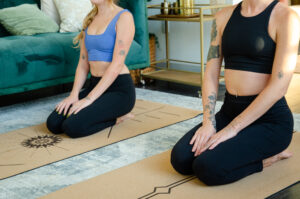
Breathing technique to improve your yoga practice

Restorative Yoga Stretches
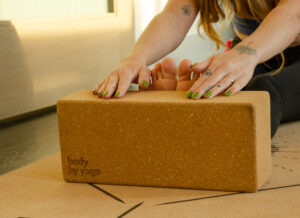
Benefits of yoga before bed
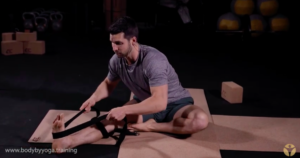
Good Stretch For Lower Back And Hamstrings
Related Articles
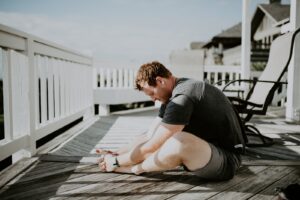
Yoga For Men
Yoga has become more and more mainstream over the years. While it wasn’t a very common practice just a few decades ago, today most people
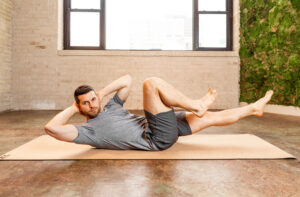
A Guide for Inflexible Guys to Working Out with Yoga
Beginner’s Yoga Workouts For Men Did you know that yoga can be a great workout? Whether you are just starting out or have been practicing
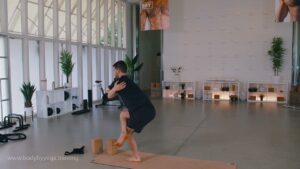
How To Do Eagle Pose
(pharmacy home delivery) (cheapest pharmacy for prescriptions without insurance)
